- News
- Reviews
- Bikes
- Components
- Bar tape & grips
- Bottom brackets
- Brake & gear cables
- Brake & STI levers
- Brake pads & spares
- Brakes
- Cassettes & freewheels
- Chains
- Chainsets & chainrings
- Derailleurs - front
- Derailleurs - rear
- Forks
- Gear levers & shifters
- Groupsets
- Handlebars & extensions
- Headsets
- Hubs
- Inner tubes
- Pedals
- Quick releases & skewers
- Saddles
- Seatposts
- Stems
- Wheels
- Tyres
- Tubeless valves
- Accessories
- Accessories - misc
- Computer mounts
- Bags
- Bar ends
- Bike bags & cases
- Bottle cages
- Bottles
- Cameras
- Car racks
- Child seats
- Computers
- Glasses
- GPS units
- Helmets
- Lights - front
- Lights - rear
- Lights - sets
- Locks
- Mirrors
- Mudguards
- Racks
- Pumps & CO2 inflators
- Puncture kits
- Reflectives
- Smart watches
- Stands and racks
- Trailers
- Clothing
- Health, fitness and nutrition
- Tools and workshop
- Miscellaneous
- Buyers Guides
- Features
- Forum
- Recommends
- Podcast
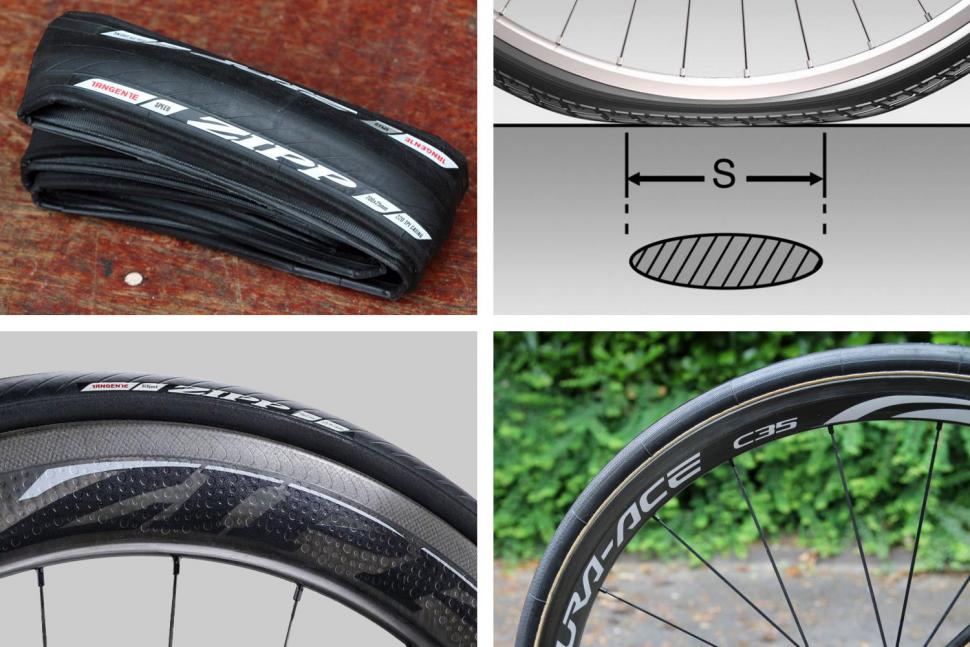 Trend spotting Why you need to switch to wider tyres Sept 2018
Trend spotting Why you need to switch to wider tyres Sept 2018Why you need to switch to wider tyres on your road bike
For many years 23mm wide tyres were the default choice for road bikes. Many racers used 21s or even narrower. In the last few years 25mm tyres have become the most popular option for both professional and amateur riders, and some riders have gone wider still. If you’ve not yet made the switch, it’s about time you did. Here’s why.
Comfort
Wide tyres can provide more comfort than narrow tyres, all other things being equal.
With a larger chamber of air between you and the road, a wider tyre allows you to drop the pressure without running the risk of a pinch flat (where the inner tube gets punctured as a result of being sandwiched between the wheel rim and the ground). The lower pressure increases the amount of cushioning you get from the road, improving your comfort.
That’s pretty straightforward, right? You’d expect a wide, soft tyre to be more comfortable than a narrow tyre that’s pumped up hard.
Check out road.cc's tyres review archive
Why is comfort important? Well, we all want to feel comfortable when we’re riding because life’s just better that way, but there’s also a performance aspect to feeling good on the bike. You can get more from your body when you’re comfortable than you can when you’re feeling battered and bruised. “Smoother is faster”, as Specialized is fond of saying.
We check out the bikes at a lot of top-level races and we reckon that about 75% of riders in last year’s Tour de France had switched to 25mm tyres, maybe even more. That’s for standard road stages, not going over the cobbles when riders go even wider.
Surely, though, the flip side is that wider tyres are slower? Well, no. It’s not as simple as that.
Rolling resistance
You’d like your tyres to roll as easily as possible but a certain amount of energy is lost through rolling resistance, which is the energy is takes to flex the tyre body where it touches the ground. Lots of factors determine rolling resistance, such as tyre width, profile, air pressure, material quality, and the thickness of the tyre casing and tread.
“Wider tyres roll faster,” says Dave Taylor, Marketing Manager at tyre brand Schwalbe. “The answer lies in tyre deflection. Each tyre is flattened a little under load. This creates a flat contact area.
“At the same tyre pressure, a wide and a narrow tyre have the same contact area. A wide tyre is flattened over its width whereas a narrow tyre has a slimmer but longer contact area.
“The flattened area can be considered as a counterweight to tyre rotation. Because of the longer flattened area of the narrow tyre, the wheel loses more of its roundness and produces more deformation during rotation. However, in the wide tyre, the radial length of the flattened area is shorter, making the tyre rounder and so it rolls better and therefore quicker.”
As Dave Taylor says, that’s when the wide tyre and the narrow tyre are pumped up to the same pressure. In truth, though, you’re likely to run a lower pressure in a wider tyre, increasing the size of the contact area. That will increase the rolling resistance above the level it would otherwise be, but according to figures from another tyre brand, Continental, a 20mm tyre with 160psi, a 23mm tyre at 123psi, a 25mm tyre at 94psi and a 28mm tyre at 80psi all have the same rolling resistance.
“In practice, the energy saving is even greater than in theory as the elasticity of the tyres absorbs road shocks, which would otherwise be transferred to the rider and so saves energy,” says Dave Taylor.
Aerodynamics
As usual, it gets more complicated when it comes to aerodynamics. It’s obviously true that a narrow tyre has a smaller frontal area than a wide tyre, but it’s useful to think of the tyre and rim together rather than just the tyre in isolation.
Wheel rims have generally started to get wider over recent years, partly because of the trend towards wider tyres. Zipp’s 58mm-deep 404 Firecrest carbon tubular, for example, has a maximum width of 27.5mm.
“Our wider rims allow the use of wider tyres,” says Zipp. “Tyre choice depends on what factor you want to prioritise: aerodynamics, CRR (coefficient of rolling resistance), grip, comfort, traction....
“You can still use narrow tyres on Zipp rims if your primary objective is aerodynamics, but if you want the ride qualities that a wider tyre provides, the Zipp Firecrest and Firestrike rims do an exceptional job of supporting those tyres in their intended design profile.”
Reynolds, Bontrager, Shimano and countless other brands have moved towards wider rims too. The Reynolds 46 Aero, for instance, is 46mm deep and 26.2mm wide.
“The current trend toward creating wheels with wider rims stems from the trend toward increasing the diameter of tyres, particularly in competitive road racing,” says Paul Lew, Reynolds’ Director of Technology and Innovation. “Wider rims offer better mechanical support to large-diameter tyres and are needed to help separated airflow reattach to the rims.”
Run a 25mm tyre on many narrow rims and you get an ice cream effect: a big, bulging scoop of tyre sitting on top of a skinny cone of a rim. The mismatch between one element and the other doesn’t result in a high level of aerodynamic efficiency. However, wider rims have been designed specifically for use with wider tyres, the rims and tyres work together aerodynamically. Airflow that is separated by a wide tyre is able to reattach better to a wider rim than to a narrow rim, reducing drag.
Even if fitting a wide tyre on a narrow rim doesn't improve the aerodynamics, you might consider it a swap worth making for other reasons, such as extra comfort.
Check out Paul Lew’s short article: Is Wider Better?
Why not go super-wide?
If this is true, why stop at 25mm? Why don’t we use 35mm or 45mm tyres on a sporty road bike?
Well, for a start they won't fit in most road bikes; a few still struggle with 25mm tyres. Second, a super-wide tyre wouldn’t work aerodynamically with existing wheel rims. And third, wider tyres would add to a wheel’s rotational weight and dull the acceleration.
For all these reasons, it seems that 25mm tyres have become the new 23. Or have they? Specialized has tacked on an extra millimetre and is making its super-quick Turbo S-Works and Turbo Cotton tyres in a 26mm width, and rolling resistance tests conducted on behalf of Velonews magazine found them to be the fastest-rolling tyres tested.
The 28mm versions of the best-rolling tyres will be faster still, and over the next few years they'll fit more and more new bikes as manufacturers expand their ranges of bikes with disc brakes.
Riders whose bikes will take them report that the 28mm versions of the fastest tyres really are another step up in comfort. For many of us they might yet turn out to be the best option.
Read more: Your guide to road cycling tyres + 13 of the best options
Read more: Check out the full road.cc tyre review archive
Mat has been in cycling media since 1996, on titles including BikeRadar, Total Bike, Total Mountain Bike, What Mountain Bike and Mountain Biking UK, and he has been editor of 220 Triathlon and Cycling Plus. Mat has been road.cc technical editor for over a decade, testing bikes, fettling the latest kit, and trying out the most up-to-the-minute clothing. He has won his category in Ironman UK 70.3 and finished on the podium in both marathons he has run. Mat is a Cambridge graduate who did a post-grad in magazine journalism, and he is a winner of the Cycling Media Award for Specialist Online Writer. Now over 50, he's riding road and gravel bikes most days for fun and fitness rather than training for competitions.
Latest Comments
- belugabob 2 sec ago
They can't spell "stupider"
- C3a 5 min 24 sec ago
Apart from any incarceration or fines, in my view driving bans need to be more routinely administered....
- Mr Blackbird 44 min 11 sec ago
How about this for negative stereotyping :...
- whosatthewheel 58 min 57 sec ago
Sadly same experience here with TPT local to me. It has recently been modernised (widened, with dirt replaced with asphalt) to create an off-road...
- David9694 47 min 56 sec ago
£1500? I almost feel the layer of grime lifting off this one with my Muc-off cleaner, a shine returning to the alu with Autosol and an old t-shirt:...
- slc 3 hours 21 min ago
Madness, isn't it? ...
- Basemetal 4 hours 7 min ago
Watch out for toe overlap (front wheel clearance) with midfoot cleats,
- Safety 5 hours 20 min ago
"So now you're saying that being in that family - even by marriage - makes you more likely to commit a traffic offence?"...
- neilwheel 6 hours 16 min ago
Will those wide rim brake models fit inside a shimano 40-49mm brake caliper with 28mm max clearance??? Gonna be a squeeze...
- Simon E 6 hours 25 min ago
I'd be even more concerned about the effect it may have on whether the helmet can still do its job in the event of an impact....

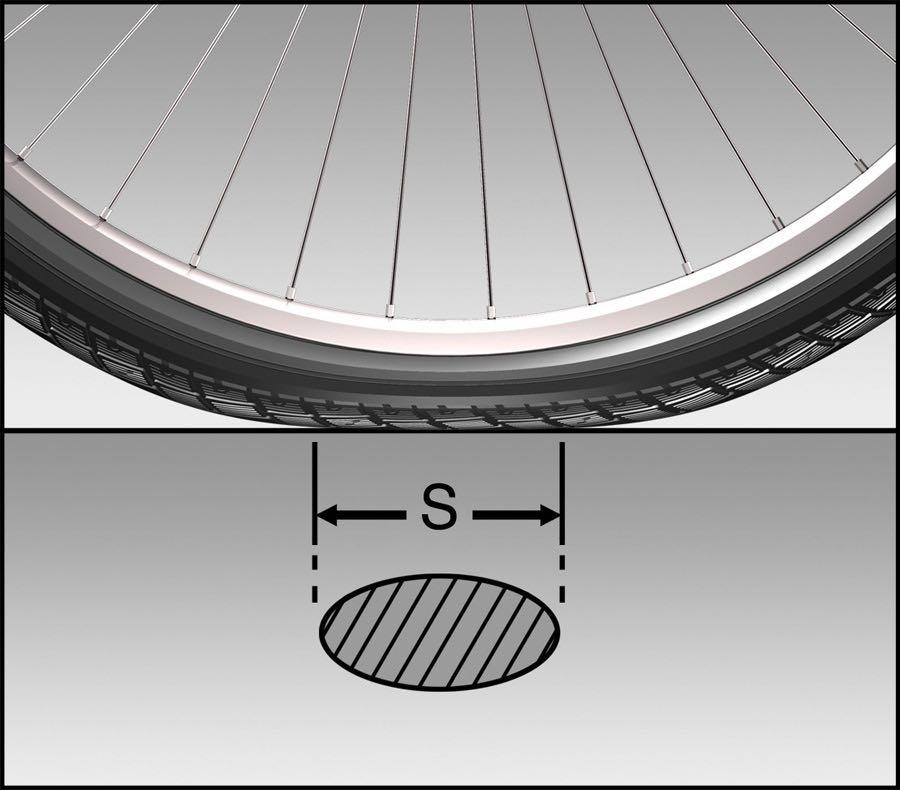
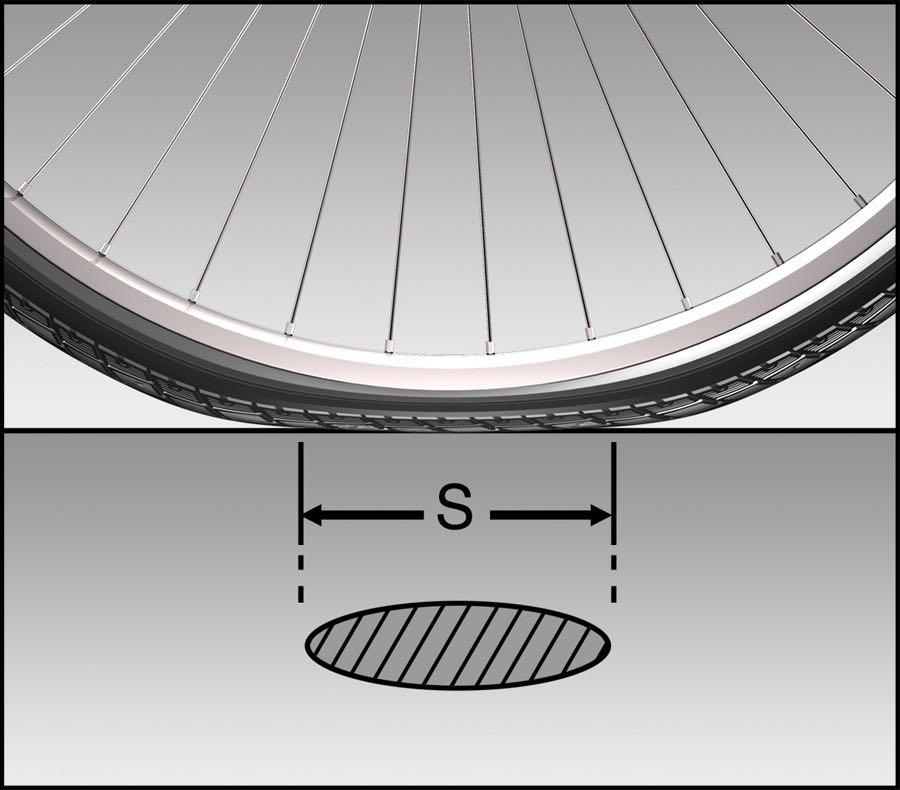
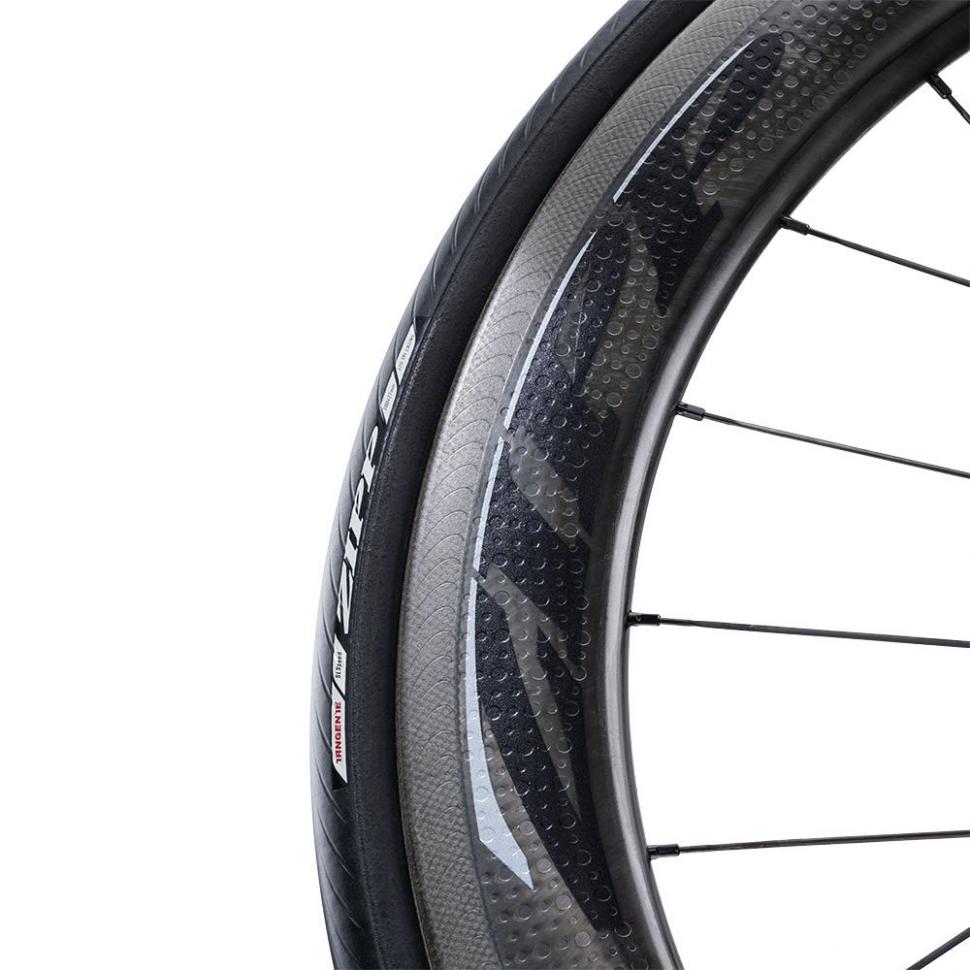
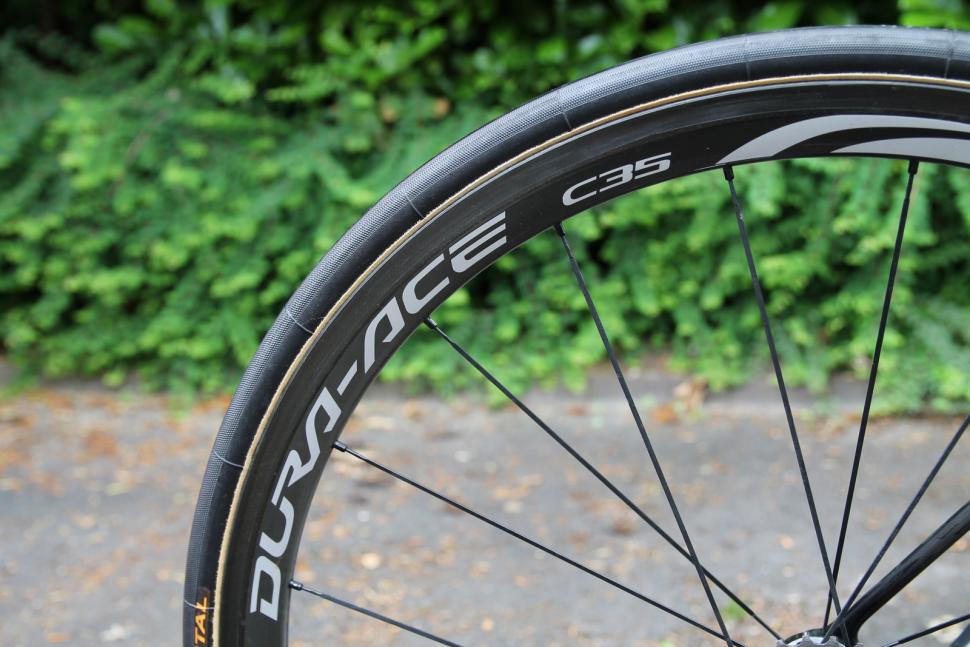
Add new comment
17 comments
Is there even an update to the article this time or was it simply auto-scheduled to reappear today?
Getting back to the topic, this summer I've been very much enjoying riding on a pair of Schwalbe Pro One TLR in a plump 34mm width. They're fast on-road, can deal with gravel and at 40-50 psi are super comfortable. I assume they'd be useless in mud but here in parched Southern England it's been ages since I've seen any.
Of course there is - the 'Updated date' has been updated.
Trend spotting? Comments 5 years old?
clearly just a fad!
Frame clearance is key. I have to run 23mm on my TT bike because nothing wider will fit and it's getting to the point where narrower tyres are getting harder to find.
I've used many combinations of tyre and wheel over the years and I'm sorry, 28's and above are simply slower or harder work in my experience compared to 25's, and a few other people I know have said the same. And that's on a mix of roads too (most are pretty crappy round here)
For really bad roads or just because you want to (comfort/commuting etc) then go for it...but I'm just not convinced personally with the wider = faster argument
Here is some information which, in a way, supports both sides of this tyre width dispute. I bought a cheap steel 'gravel bike' with 37 mm tyres. I then did numerous rides on the new bike at about 40 psi compared with the considerably lighter titanium Merlin/ Ultergra on 23/25 mm tyres at about 80- these are rough roads in the North Lancashire wilds. The gravel is 5% slower. 5% isn't much for an individual, but a large deficit in a race.
Just an unpleasant comment once more.
Nothing wrong with the first statement. Last line is just to cause a reaction.
Same tactic. Continues to be tiresome.
Shouldn't there be a companion piece to this article? It would be titled something like "Things they don't tell you about wider tyres". Maybe I missed it.
Agreed, when they start using 25mm tyres in the velodrome I'll believe all the crap about rolling resistance of wider tyres. Comfort I can believe, but I've been riding 23mm tyres for many years and never had a problem. With all the design expertise, manufacturers can produce more comfort features in the frame anyway. Don't look to the professional peloton for examples - they ride what they're paid to ride by their sponsors. Instead look to amateur, non-sponsored riders. This is all marketing hype anyway, designed to sway us all into spending money to follow a trend. 5-10 years time they will all be pushing narrower tyres as the latest and greatest, go-fast thing. Wider tyres = greater weight to drag up hills, and longer to accelerate. All things are not equal:- so compare 19mm tyres at 160psi, 23mm tyres at 120psi, 25mm at 100psi 28 at 75psi - let the user decide the trade-off between comfort, speed and cost.
Velodromes are completely smooth surfaces so tyres can be run at very high pressure without having to worry about the loss of power through wheel bounce experienced on asphalt. Saying you won't believe the case for wider tyres on the road until you see them on the velodrome is like saying you won't believe in the need for 42mm tyres on MTBs until you see road racers using them, you're comparing totally different environments, purposes and uses.
I prefer a slightly wider tyre for a little more comfort as I have had a back inside in the past. One thing these reviews never mention is to check your bike frame can accommodate wider tyres. It's not just the clearance between the front forks and brake callipers the rear chain stay gap where it meets the seat tube is mega important.
What a load of shite,
Some of us may do a bit of amateur road racing, the odd time trial pandemic allowing.
Most bicycle riders, I hope enjoy their hobby, but just go out ride around thinking they are god knows who, and buy into all this aero/ electronics/ light weight stuff. They go out “training” for a “race”( sportive). No wander I got a load of abuse on the last mass participation ride I did in Pembrokeshire on my fixed wheel bike, as I rode past many of these riders.
Done me no good though as I am now a 48 year old with a pacemaker, still riding my fixed gear, yep and still riding past my wide tyre aero friends.
The testing on the new Conti 5000 in various widths by BikeRollingResistance shows that wider tyres are slower/have a higher Crr/consume more energy at the correct pressures with respect to weight/width, and that's on a continually rough rolling road (which we never ride on all the time!) and also ignoring any aero losses - which off course isn't going to be much but it's still there.
Please correct me if I am wrong.......But..... All the data and graphs and so forth and one thing everyone is ovelooking is the "AT THE SAME PRESSURE" caveat.
No one runs a 23mm tire at 50 PSI. Of course it will drag more and be equivilent (or worse) to the wider tire.
If you inflate the thinner tires to their corrct pressure they will run faster (minus bumping up and down) than a fat MTB tire.
I have read a few website now all repeating this same info from the same guy and it just isn't correct.
You don't inflate a wide and skinny tire to the same pressure - the volume of air is different thus the thinner tire runs on more pressure, less air.
Every tire I've swapped out that is fatter runs slower.
I don't care because I ride away from cars and use a hybrid now but I can tell instantly.
Compare a 23m tire at ~90psi to a 38m tire at ~50 and then see.
Am I correct?....or are ppl running road tires around town almost flat?
No one is overlooking that. Hence, "In truth, though, you’re likely to run a lower pressure in a wider tyre, increasing the size of the contact area. That will increase the rolling resistance above the level it would otherwise be, but according to figures from another tyre brand, Continental, a 20mm tyre with 160psi, a 23mm tyre at 123psi, a 25mm tyre at 94psi and a 28mm tyre at 80psi all have the same rolling resistance.
“In practice, the energy saving is even greater than in theory as the elasticity of the tyres absorbs road shocks, which would otherwise be transferred to the rider and so saves energy,” says Dave Taylor."
Long a convert to 25 - 27mm tyres, out of sheer tightness I decided to replace my cut-to-pieces Open Pave's with some old 23mm Michelin Pro 02s that have been in a box for years. Been riding them for a couple of weeks - 700km or so: the difference in comfort - stretched over my HED Belgiums - is negligible: the difference in speed and resistance to cuts and punctures, however, was a bit of an eye opener. Think I'm going back to French tyres....